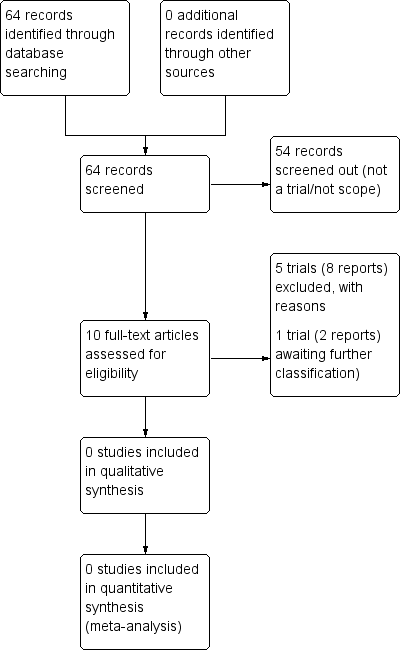Parto planificado a término o cerca del término para mejorar los resultados de salud en pacientes embarazadas con diabetes preexistente y sus neonatos
Referencias
References to studies excluded from this review
References to studies awaiting assessment
Additional references
References to other published versions of this review
Characteristics of studies
Characteristics of excluded studies [ordered by study ID]
| Study | Reason for exclusion |
| This study explores immediate birth versus expectant management for women with gestational diabetes at term. | |
| This study compares expectant management versus induction of labour for women with gestational diabetes. | |
| No further details or publication in the intervening period (38 years). | |
| The focus of this study was women with gestational diabetes. | |
| This study evaluates the impact of induction of labour on maternal and fetal outcomes in women with insulin‐dependent gestational diabetes. |
Characteristics of studies awaiting assessment [ordered by study ID]
Ir a:
| Methods | Study Design: "randomised trial" Duration of the study: 3.5 years |
| Participants | Setting: Women's Hospital, Los Angeles County‐ University of Southern California Medical Center. Inclusion criteria: "women diagnosed before pregnancy with insulin‐dependent diabetes mellitus or non‐insulin‐dependent diabetes mellitus without vascular complications or with gestational diabetes requiring insulin treatment during pregnancy, and with good metabolic control of blood glucose levels ... 38 completed weeks gestation (266 days), good compliance with clinical appointments and home blood glucose monitoring, no abnormalities in the twice weekly antepartum assessment with nonstress testing and amniotic fluid volume measurement performed from 34 weeks onward, singleton gestation and cephalic presentation, clinical and ultrasonographic estimation of fetal weight <3800gm at 38 completed weeks with no evidence of intrauterine growth retardation, no other medical or obstetric complications, a candidate for trial of vaginal delivery (no more than 2 previous C‐sections)". |
| Interventions | Planned birth: N = 100 women, "labour was induced with iv oxytocin .... in women with favourable Bishops Score (<4), unscarred uteri and normal amniotic fluid indexes (>5.0cms), up to 3 applications of vaginal prostaglandin (3 mg) were used for cervical ripening before oxytocin treatment". Expectant approach: N = 100 women, "expectant management consisted of daily split dose insulin therapy and home blood glucose monitoring, weekly antenatal clinic visits, and twice‐weekly antepartum testing". Induction of labour indicated by: "suspected fetal distress .... preeclampsia, maternal hyperglycaemia, estimated fetal weight > 4200gm, 42 weeks gestation". |
| Outcomes | Outcomes considered relevant to this review: mode of delivery — vaginal delivery, caesarean delivery; infant birthweight — macrosomia, large‐for‐gestational age; infant outcome — shoulder dystocia, birth trauma (bone fracture, Erbs palsy), hypoglycaemia, mortality. |
| Notes | Funding: not known Trial authors declaration of Interest: none declared The authors were contacted on: 10th Jan 2017, to obtain data specifically related to pregnant women with pre‐existing diabetes in both the experimental and control groups. |

Study flow diagram.

